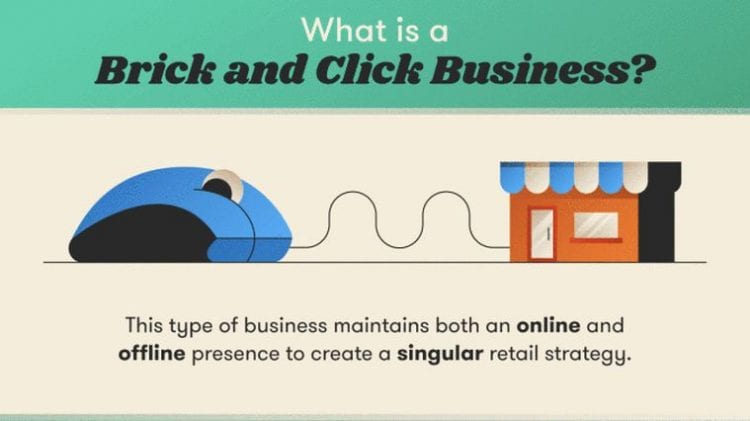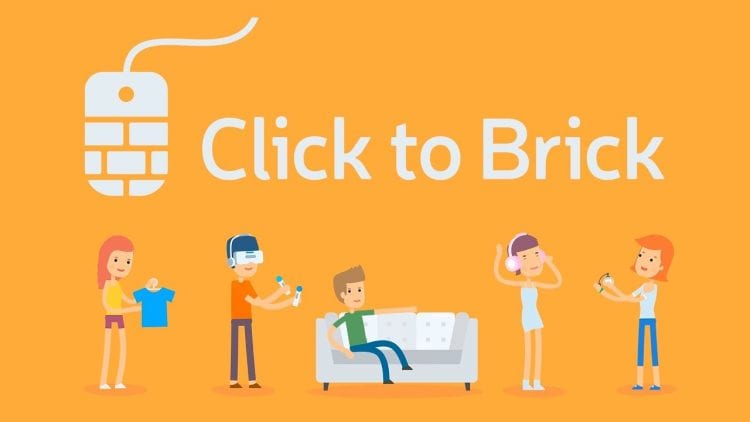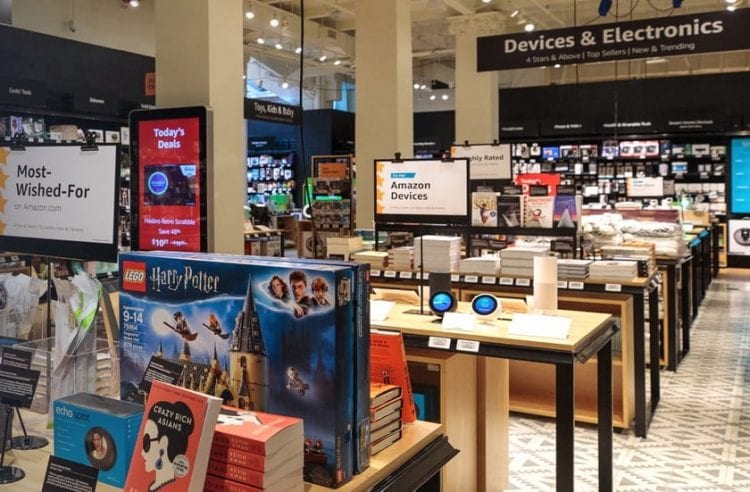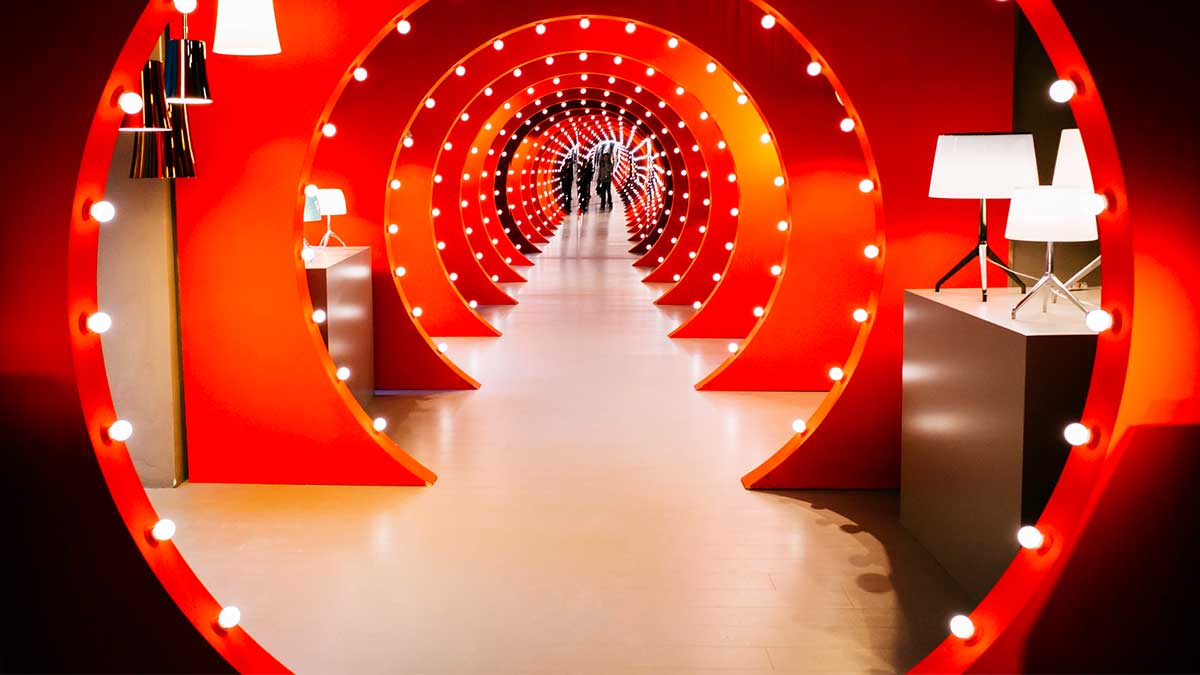Click and brick retail, also known as click and mortar retail, is essentially the incorporation of both offline and online channels in a retailer’s business strategy. Giving customers a choice between online and physical stores is the pillar of a click and brick model, and it offers flexibility, convenience, and options to consumers.
While there are clear advantages to an omnichannel (or multichannel) strategy, there are a few potential challenges to consider. Firstly, operating multiple sales channels is not an easy task; the service and workers need to be on the same page across the board. It’s also crucial to offer incentives to shop in physical stores, be it with special items or promotions. Simply put, there needs to be a certain degree of infrastructure in place for a click and brick business to operate smoothly.

Despite the challenges, click and mortar retail is perhaps the most effective business strategy today, especially with the economic disruptions surrounding 2024. The flexibility and versatility of a multichannel model allow retailers to remain effective and bring in a wider range of consumers, as reflected in the growing number of retailers adopting a click and brick system. It’s possible due to three well-developed characteristics – competitiveness, availability, and reach.
Competitiveness: Two channels are better than one
Simply by virtue of having multiple channels, a retailer immediately becomes more competitive in their market. There are several notable benefits of click and brick models in this area; for one, having an online presence makes a retailer easier for consumers to find and gives potential buyers a quick way to compare prices. For this reason, retailers should always remember about their rivals’ performance; namely, competitor-based pricing is crucial to edge out competing brands (you can find more info in this post). As it is easier now than ever to compare prices online, using true competitors’ offers as a benchmark can give some insights into a strategy to remain competitive within types of retail.

At the same time, brick-and-mortar stores have their own share of benefits. Some buyers might simply prefer face-to-face interactions or want to take a look at products before buying, so offering both online and offline shopping could be the key to staying competitive and building a loyal consumer base. However, retailers still have to offer incentives to shop at their stores over their competitors, perhaps through superior customer experience or better prices. If used correctly, both the offline and online channels offer certain advantages over single-channel strategies.
Availability: stay with your clients permanently
Brick-and-mortar stores have opening and closing times, which limits the availability of a business to the full spectrum of customers. Similarly, the location could be a setback when it comes to attracting buyers outside a certain range. Other factors such as weather and other disruptions that force people into their homes (such as the current pandemic) can severely impact a retailer’s business. Adding an online store offsets helps to eliminate these issues, making a retailer widely available and weather-proof.

For brick-and-mortar stores, adding an online channel could be a difference-maker when it comes to attracting buyers. It allows them to be available 24/7 (in many cases, even for customer support inquiries) and makes their products easier to find in general. Having an online option gives consumers the ability to find a retailer and their products without committing time and money on transportation. Not to mention, sourcing hard-to-find items is far simpler online, and could well be the only avenue some retailers have in connecting to buyers. Simply put, building a presence online makes a business constantly available and makes their product line easy to navigate.
That’s not to say that having a physical store only limits availability. For buyers that expect quick, effective customer service, having a brick-and-mortar location to go to can be well-worth the time. Similarly, refunding or returning items is more straightforward in person, whereas doing it online can take longer and have unforeseen costs. Essentially, while having an online store makes a retailer more available overall, the quality of availability is what keeps brick-and-mortar stores competitive in this regard. Thus, combining the two channels to get the best of both adds a new dimension to service.
Reach: speaking to a wide audience is easy
According to research from Statista, online shopping preference seems to follow a downward trend with age. In 2017, while 67% of millennials preferred to do their shopping online, only 28% of seniors shared this preference. As a result, combining brick-and-mortar and e-commerce strategies is crucial in casting a wider net and attracting more age groups. After all, those who do their shopping and research online might never find a physical store, and vice versa for consumers that don’t do online shopping.
One of the biggest benefits of an online channel, though, is the outreach a business can gain by using online marketing strategies. Targeted ads alone could boost exposure, while clever marketing and ad placement could be huge for attracting new buyers. Online advertising is far more affordable than traditional commercials (magnitudes more than TV spots, for example), and has a farther reach if implemented correctly. A social media presence, marketing tactics that appeal to typical users, and positive brand management could also encourage online users to give a retailer a chance. And, while online marketing could be an asset to pure brick-and-mortar stores, having an online store just one click away is extremely convenient.
Closing Thoughts
There’s a reason click and brick retail is taking off in recent years — it combines the convenience and reaches of an online store while not sacrificing the benefits of physical locations. With the effective infrastructure in place, unifying online and offline shopping has a range of benefits for both the business (competitiveness and outreach) and the buyer (availability and convenience).
A click and mortar strategy could truly revive a stagnating offline brand, either by attracting a new base of customers or offering the convenience of hassle-free shopping and door-delivery. Regardless, recent events are allowing the omnichannel retailers to thrive despite the economic and social issues — showing that click and brick are here to stay.

